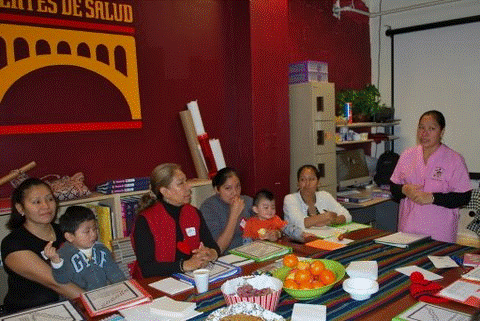By:
A 2009 review by O’Brien et al on the Role Development of CHWs tries to answer that question. For community health workers to be effective at their jobs, the authors contend that the selection of CHWs, the quality of training and the clarity of their role are critical factors. If either the background or training of the CHW is inappropriate, the program will have limited impact. Yet their research shows that these areas are often not well defined, making interpretation of study findings difficult. As the US federal government, private insurers, employers and community advocates increasingly recognize that Community Health Workers present a potentially crucial part of the solution to the intractable problems facing the U.S. health system, it is important to understand what research should include.1
This study focused on two central components of CHW role development, selection and training processes, in an effort to develop a model that will help future researchers design and report their CHW programs in scientific literature2. To understand how to deploy CHWs most effectively, it is important to start by thinking through how CHWs are selected and trained, and how the expectations for their role are established. Unclear roles can cause duplication of effort, difficult work environments and inefficient operations, compromising the quality of patient care.
To study how the CHW role relates to selection and training, the researchers reviewed forty-four articles from 1990 to 2005 included in the 2007 HRSA CHW National Workforce Study, MEDLINE and CINAHL.3
We looked for aspects of health worker training important to patient outcomes, including: 1) how the person was selected to be a CHW, 2) how training was done, and by whom, 3) what the CHW’s role in patient care was supposed to be; and 4) what the patient outcomes the CHW’s role was focused on improving.
Our review showed inconsistent reporting on selection and training in the literature; 41% of the studies discussed CHW selection process, while 59% described training. It further revealed wide variations in training content, duration and methods. From this review we developed a model that describes our results, called the “Role Outcomes Linkages Evaluation” (ROLE) Model.
Here’s what it looks like:

Figure 1: O’Brien et al 2009
The model consists of four steps that researchers should consider when developing and reporting on intervention studies in order for CHWs to effectively assume their assigned roles. The first step suggests defining a process for selecting CHWs; the second lists the needed training inputs for CHWs to successfully enact their role. Outcomes measures should be considered when defining processes for selection, training and role enactment. The authors conclude that creating consistent processes for CHW selection and training will strengthen intervention literature and strengthen readers’ ability to more effectively translate study findings into practices.
How can you use the ROLE model? We recommend the following:
If you are organizing training for CHWs: use the ROLE Model to think about the requirements of the CHW’s role to determine selection criteria, training needs, performance expectations and the impact on outcomes.
If you are doing research on CHW contributions to improving health care: the model provides a way to link the training program to a patient outcome –or several outcomes.
If you are writing an article or report on a CHW program: use the components of the model as a guide for reporting in the CHW literature; the more people document each component, the stronger the evidence base will become.
Ultimately, the goal of any CHW’s work is to improve patients’ health. The more we understand how training quality and CHW roles link to patient outcomes, the better we will understand why we are getting the results we do from our programs, and how to improve them.
1O’Brien, M.J. MD, et al. , Role Development of CHW, An Examination of Selection and Training Processes in the Intervention Literature, (AM J Pre Med 2009: 37 (6S1): S262-S269)
2Ibid.
3Cumulative Index to Nursing and Allied Health Literature
| Allison Squires, PhD, RN, author of the blog, is an assistant professor at NYU College of Nursing. Her mixed-methods research focuses on the global policy issues of healthcare human resources development, with a specific interest in how to address the challenges present in developing countries. |  |
| Matthew O’Brien, MD, MSc is an Assistant Professor of Medicine and Public Health at Temple University. He is also co-founder and Medical Director of Puentes de Salud (www.puentesdesalud.org), a health center that provides diverse clinical services and a wide range of community-based programs to Philadelphia’s growing Latino population. |  |


Leave a Reply